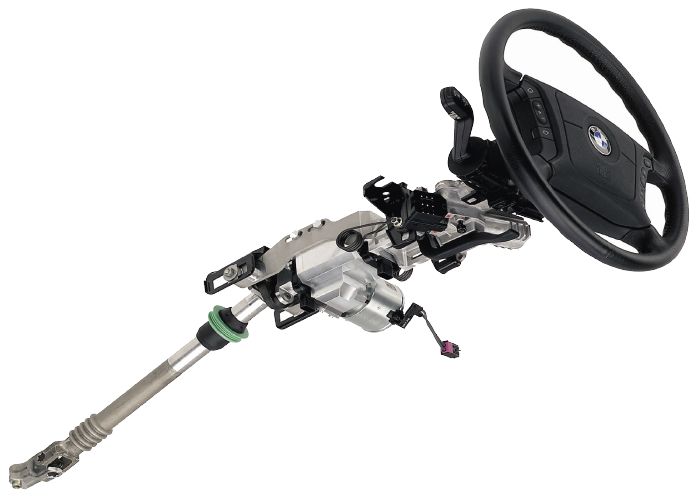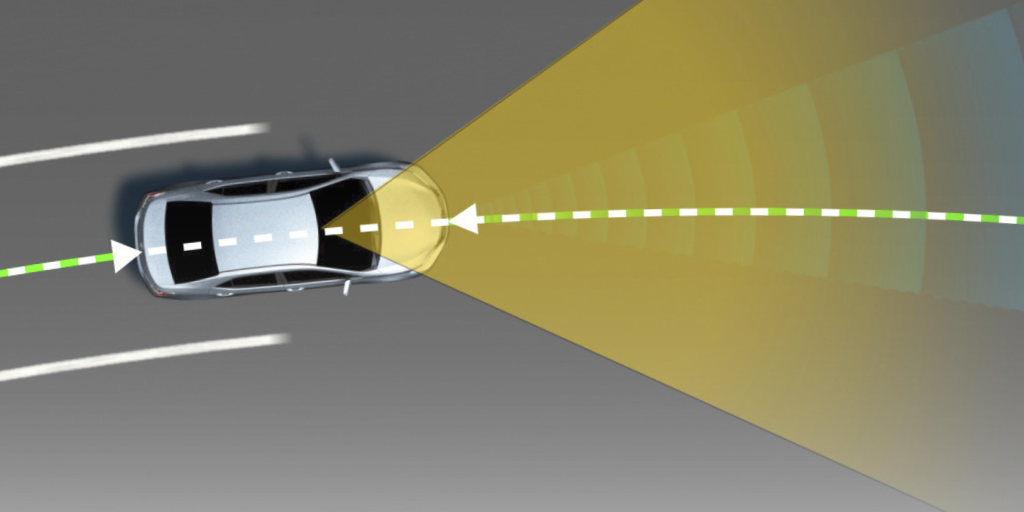What and Why of Sensing the Steering Angles
Measuring the position angle and rate of turn is critical for Electronic Stability Control (ESC) systems, Anti-lock Braking Systems (ABS) and Advanced Driver Assistance Systems (ADAS). Scan tools call these Steering Angle Sensors (SAS) and typically display the information in degrees. Combined with input from the yaw, accelerometers and wheel speeds, a computer can determine if the vehicle is understeering, oversteering or is out of control.
The SAS is typically part of a sensor cluster behind the steering wheel. The sensor cluster will have more than one steering position sensor, and some sensors consist of three sensors for redundancy and to confirm the data from the SAS. The ABS/ESC module needs to receive two signals to verify the steering wheel’s position, and these signals are often out of phase with each other. Some sensor clusters include a way to measure the torque being applied to the wheel.
Some SAS clusters and sensor modules connect to the Controller Area Network (CAN) bus, a high-speed serial data network that communicates in binary language to other modules or nodes. When you connect your scan tool to a vehicle, it becomes a node on a network. This connectivity allows for the steering angle sensor information to be shared with the electric power steering system and information like the torque being applied to the steering wheel with the stability control system.
High-speed CAN buses use just two wires per module or node to communicate vast amounts of data. This means that a node, like a SAS module, needs to interpret and create signals that can be understood by the other modules on the bus.
The SAS module can connect directly to the ABS/ESC module on a CAN bus, or it can be part of the overall CAN network, in a loop that connects various modules on the vehicle.
Sifting through data
The best way to test modules on a high-speed CAN bus is with a scan tool. Most tools look at the data directly, but some scan tools may not be able to look at the datastream directly for a SAS signal because of software issues with the tool. If you are in this situation, observe how the actuation of a sensor, switch or component can change activity on the data bus.
A scope connected between chassis ground and the bus wires in the OBD II DLC looking at the voltage can see packets of data being communicated on the bus.

On a direct-type SAS CAN sensor, you can see the sensors communicating with the ABS/ESC module as the wheel is turned. It’s impossible to tell what is being communicated, but it is possible to see if they are communicating.
On some vehicles, the SAS sensor cluster is part of a module that may include functions for the turn signals, steering wheel, audio controls and wipers. This module is not a box, but part of the column and might have multiple CAN lines coming out of it. Often, the SAS cluster cannot be replaced on its own, instead requiring replacement of the entire unit.
Resetting Steering Angle Sensors
Many vehicles require that the SAS is reset or recalibrated after performing an alignment or replacing parts in the steering system. There are three types of reset procedures:
- First, some systems self-calibrate on their own.
- Second, some vehicles require specific wires or grounded or buttons that need to be pressed.
- Third, some systems require recalibration with a scan tool.
Even if the SAS is out of calibration, most vehicles can sense if it’s traveling in a straight line. If the angle is far enough out of range, it might set a trouble code and disable the ESC system.
On some Chrysler vehicles, recalibrating the sensor after an alignment or a dead battery is just a matter of turning the wheels lock-to-lock, centering the wheel and cycling the key. This “auto-learn” is becoming more common on newer vehicles. But, some systems will require a scan tool to initiate the auto-learn process.
There are many options for scan tools to reset the SAS; some scan tools are even integrated into an alignment system. After the reset is completed with the scan tool, the tool may advise you to go lock-to-lock with the steering wheel. Some even have a procedure to set the steering stops for the electric power steering.
It is a good practice before every reset (no matter the make or model) to move the steering lock-to-lock. It is also critical to connect a scan tool to check the operation of the SAS. At first, the number might not range from 0º to 360º. The number could be too negative or improbable. Once the relearn procedure is performed, the numbers should meet the requirement for straight ahead.
ADAS Connection
The steering angle is used by many ADAS functions, from blind-spot detection to autonomous driving. If the steering angle sensor is not calibrated, it could lead to the false activation of many ADAS systems. The most annoying malfunction is the false activation of the lane departure system. Even the smallest of errors in the SAS can make the vehicle think the driver is trying to steer into an oncoming lane. Some systems may just shake the seat, while other systems might try to steer the vehicle back into the lane.














